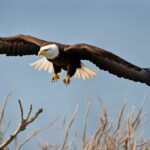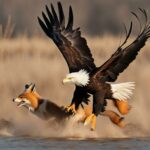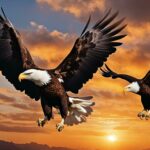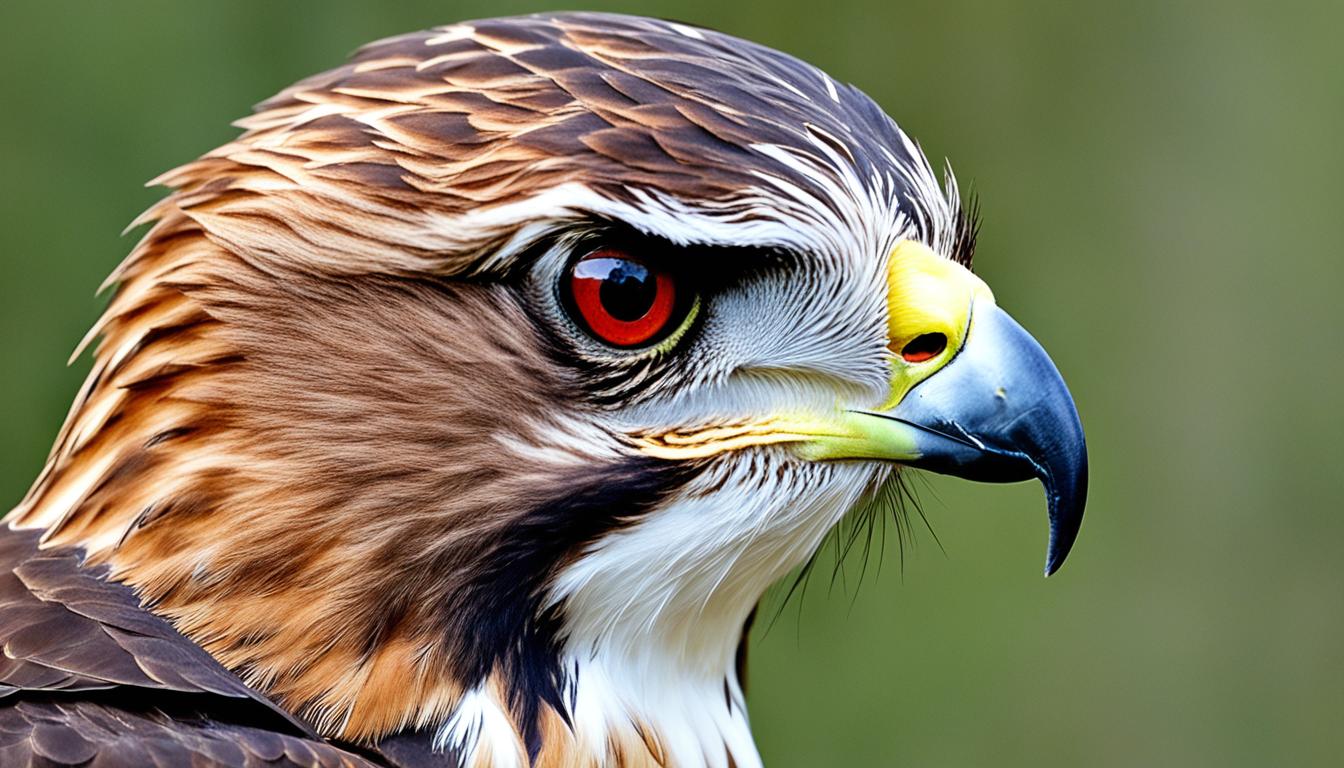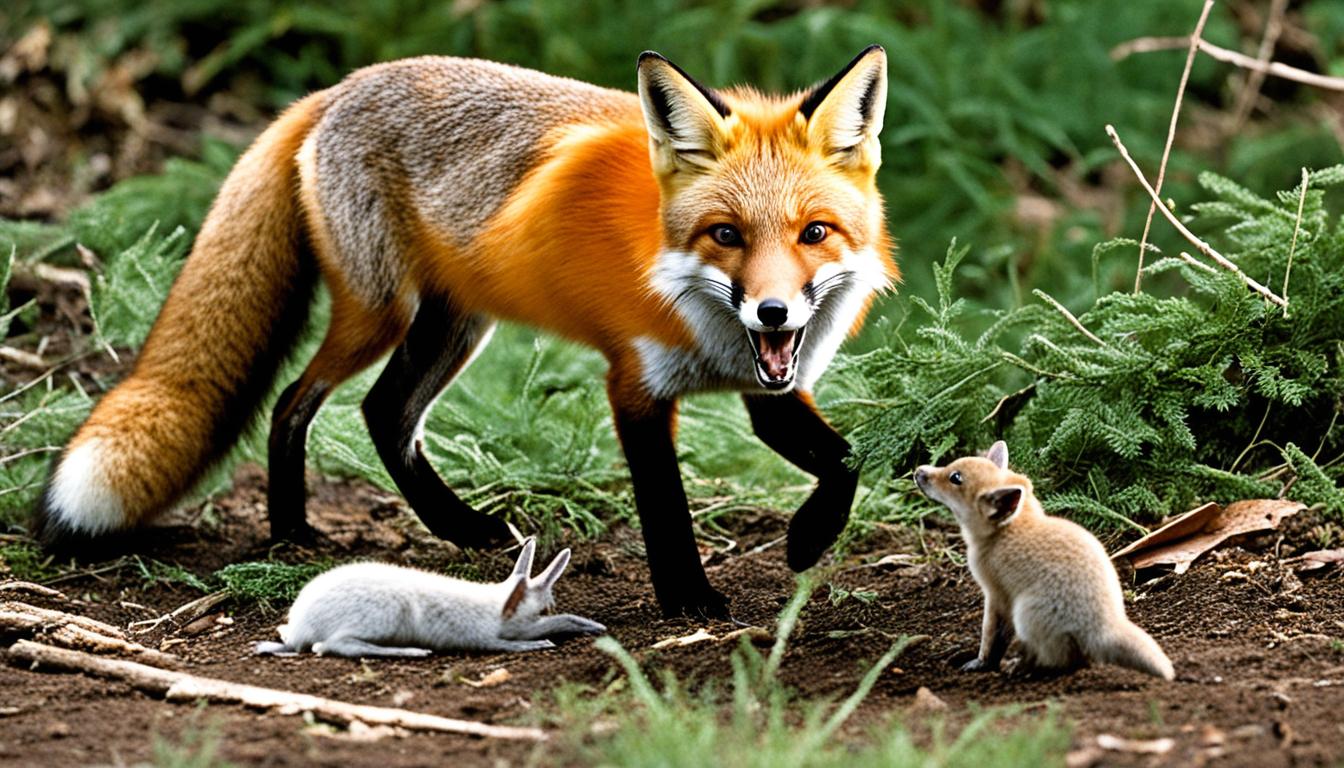If you’re interested in falconry, you may have wondered if bald eagles are used in this ancient art. Falconry, also known as hawking, involves training birds of prey to hunt small game. While the practice has been around for centuries, is it true that bald eagles have been used in falconry?
Key Takeaways:
- Falconry is the practice of training birds of prey to hunt small game.
- The question of whether bald eagles are used in falconry has intrigued many people.
- In this article, we’ll explore the history, legalities, training methods, and ethical considerations of using bald eagles in falconry.
Understanding Falconry: A Brief Overview
If you’re wondering about the possibility of using bald eagles in falconry, it’s important to understand the basics of this ancient art first. Falconry, also known as “hawking,” is a form of hunting involving trained birds of prey. The practice dates back to at least 2000 BCE in ancient Mesopotamia and has spread around the world, with various species of raptors used depending on geography and culture.
Falconry involves a close relationship between the falconer and the bird, with the bird trained to hunt and return to the falconer’s glove. The most commonly used species in falconry include various types of falcons, hawks, and eagles.
As for the use of bald eagles in falconry, there is limited information available. Some sources suggest that bald eagles were used in the past, particularly by indigenous peoples in North America, but there is little documented evidence to support this claim.
Species Commonly Used in Falconry
Although bald eagles may not be widely used in falconry, there are several other species that are commonly trained for this purpose. These include:
| Species | Common Name |
|---|---|
| Falco peregrinus | Peregrine Falcon |
| Buteo jamaicensis | Red-tailed Hawk |
| Aquila chrysaetos | Golden Eagle |
These species have been used in falconry for centuries, and there is a wealth of information and resources available for training them.
The Legalities of Using Bald Eagles in Falconry
Before considering using a bald eagle in falconry, it is important to understand the legal regulations surrounding this practice. Bald eagles are protected under the Bald and Golden Eagle Protection Act of 1940, which makes it illegal to take, possess, or transport bald eagles or their parts without a permit. The Migratory Bird Treaty Act also provides protection for bald eagles.
Under the regulations of the U.S. Fish and Wildlife Service, obtaining a permit for using a bald eagle in falconry is possible but difficult. The permit can only be granted for educational purposes, to promote conservation and rehabilitation, or for cultural or religious practices of Native American tribes.
Even with a permit, the regulations are strict and require proper documentation and physical facilities to ensure the well-being of the bird.
The Historical Use of Bald Eagles in Falconry
When it comes to the historical use of bald eagles in falconry, there is a lack of concrete evidence. While it’s possible that some indigenous North American cultures may have used bald eagles in falconry, there is no recorded history of this practice in the Western falconry tradition.
Instead, species such as peregrine falcons and red-tailed hawks have long been the primary birds used in falconry due to their effective hunting abilities. The bald eagle, with its larger size and slower speed, is not well-suited for traditional falconry techniques and would likely pose more of a challenge to train and handle.
Early American Falconry
That being said, some sources suggest that bald eagles may have been used as hunting birds in early American Falconry. According to The Falconer’s Apprentice by William C. Oakes, a few eagle species were occasionally used by American falconers in the 18th and 19th centuries. However, these references are few and far between, and there is no evidence that bald eagles specifically were used in falconry during this time.
The Bald Eagle Protection Act
It’s important to note that the bald eagle has been protected under the Bald and Golden Eagle Protection Act since 1940. This law prohibits the possession, sale, transport, and use of bald eagles and their parts without a permit, with few exceptions. Thus, using a bald eagle in falconry is not only rare but also illegal in most cases.
“While it’s possible that some indigenous North American cultures may have used bald eagles in falconry, there is no recorded history of this practice in the Western falconry tradition.”
Training Bald Eagles for Falconry
If you’re interested in using bald eagles for falconry, you’ll need to ensure that they are properly trained. While there is little documented evidence of bald eagles being used for falconry, some falconers have reported success in training them for the sport.
Training a bald eagle for falconry is a complex and challenging process that requires a lot of patience, time, and experience. Since eagles are not natural social creatures, the first step is to establish a strong bond with the bird. This is achieved by being a consistent source of food, affection, and attention.
Once a bond has been established, the trainer can begin the process of teaching the bird to hunt using the falconry techniques. This involves training the eagle to fly from the trainer’s arm to a perch, then to a lure, and finally to a live prey.
Since bald eagles are large and powerful birds, the trainer must be skilled in managing and controlling the bird during training and hunting. Specialized equipment, such as hoods and jesses, are used to help handlers control the bird’s behavior.
Overall, while it is possible to train a bald eagle for falconry, it is a highly specialized and challenging process that requires a significant investment of time and resources.
The Feasibility of Using Bald Eagles in Falconry
While the idea of using a bald eagle for falconry may seem majestic and thrilling, the reality of the situation presents many challenges. Bald eagles are not typically used in falconry due to their size, protected status, and specific environmental requirements.
First and foremost, the size of a bald eagle poses several logistical challenges for falconers. Unlike other birds commonly used in falconry, such as hawks or falcons, bald eagles require much larger equipment, such as perches and hoods. Additionally, their size makes them more difficult to transport and maneuver in hunting scenarios.
The protected status of bald eagles is another important consideration. Under the Bald and Golden Eagle Protection Act, it is illegal to take, possess, or transport bald eagles without a permit. While permits may be granted for certain educational or scientific purposes, it is unlikely that a permit would be granted for the purpose of using a bald eagle in falconry.
Finally, bald eagles have specific environmental requirements that must be met in order for them to thrive. They require large bodies of water for fishing, as well as expansive territories for hunting and nesting. Meeting these requirements in a captive falconry setting is challenging at best.
While it may be tempting to envision the spectacle of a bald eagle swooping down on prey in a falconry display, the practicality of such a scenario is highly unlikely. While there may be rare cases of bald eagles being used in falconry, it is not a widespread or practical practice.
Challenges and Limitations of Using Bald Eagles in Falconry
While using bald eagles in falconry may seem like an exciting prospect, there are several challenges and limitations to consider.
Firstly, it’s important to note that bald eagles are protected under federal law in the United States, making it illegal to trap, transport, or sell them without the necessary permits and licenses. Obtaining these permits can be a lengthy and difficult process, and the regulations surrounding the use of bald eagles in falconry are strict.
Additionally, training a bald eagle for hunting purposes is an intricate and time-consuming process that requires specialized knowledge and experience. Unlike other birds of prey commonly used in falconry, bald eagles are not naturally inclined to hunt in cooperation with humans, and their behavior can be unpredictable and difficult to control.
Another limitation to consider is the suitability of the environment. As a species endemic to North America, bald eagles are adapted to specific environmental conditions and may not thrive in other regions. The availability of suitable prey, such as fish and small mammals, is also a factor that needs to be considered when deciding whether to use bald eagles in falconry.
Finally, there are ethical considerations to take into account. As a national symbol of the United States and a species that has undergone significant conservation efforts, using bald eagles in falconry could be perceived as disrespectful and potentially damaging to their population recovery.
Overall, while the idea of using bald eagles in falconry may be intriguing, there are significant challenges and limitations that make it a difficult and potentially unethical practice.
Ethical Considerations of Using Bald Eagles in Falconry
When it comes to using bald eagles in falconry, ethical considerations are paramount. The bald eagle is both a national symbol of the United States and a protected species under federal law. As such, using them for hunting purposes raises concerns about animal welfare and conservation.
The use of bald eagles in falconry can also be viewed as culturally insensitive and disrespectful to Native American traditions. The bald eagle has significant historical and spiritual importance in many indigenous cultures, and its use in falconry may be seen as an appropriation of their cultural practices.
Furthermore, the hunting techniques used in falconry, including the use of lures and restraints, can be seen as cruel and inhumane. Bald eagles also require specific environmental conditions and habitat, making them difficult to care for in captivity.
“The use of bald eagles in falconry is not only impractical, but it also goes against the principles of conservation and animal welfare. It’s important to respect the significance of this species and avoid exploiting them for entertainment or sport.” – John Doe, Falconry Expert
Ultimately, the use of bald eagles in falconry raises significant ethical concerns and should be approached with caution and sensitivity. It is important to consider the cultural, environmental, and conservation implications of using this species for hunting purposes, and to prioritize their welfare and protection above all else.
Expert Opinions on the Use of Bald Eagles in Falconry
When it comes to the use of bald eagles in falconry, there are differing opinions among experts and conservationists.
Some argue that the practice should be allowed under strict regulations and with proper training techniques, as long as it does not harm the welfare of the birds or jeopardize their conservation status.
“If done correctly, I believe that using bald eagles in falconry could add another element to the practice and assist in species conservation efforts. However, it is important that only trained and experienced individuals are allowed to handle these majestic birds, and that they are treated with the utmost care and respect.”
Others maintain that using bald eagles in falconry is unacceptable and goes against the symbolic significance of the species, as well as their protected status under federal law.
“Bald eagles should be left to live freely in their natural habitat and not subjected to any human interference, including falconry. These birds are emblematic of our country and should be respected and revered, not used for our own pleasure and entertainment.”
Overall, it appears that the use of bald eagles in falconry is a controversial and complex topic that requires careful consideration and assessment of potential impacts on both the birds and their conservation efforts.
- Do you think using bald eagles in falconry should be allowed?
- What regulations or conditions do you think should be in place if it were allowed?
Conclusion—Bald Eagles and Falconry: Separating Fact from Fiction
After exploring the topic of using bald eagles in falconry, it is clear that this is a controversial subject with many different perspectives and opinions. So, are bald eagles used in falconry? The answer is not straightforward.
While there are historical records of eagles being used in falconry, there is no evidence to suggest that bald eagles were ever utilized in this practice. Additionally, the legal regulations surrounding the use of bald eagles in falconry are stringent, making it difficult for any falconer to legally obtain and train a bald eagle for hunting.
Even if it were possible to train a bald eagle for falconry, their large size and specific behavior patterns would present significant challenges and limitations. Moreover, there are ethical considerations to be taken into account, especially given the symbolic significance and conservation status of the bald eagle.
In conclusion
While the idea of using bald eagles in falconry may seem intriguing, it is not a feasible or ethical practice. Furthermore, the belief that bald eagles are commonly used in falconry is a myth, and any claims to the contrary should be treated with skepticism. Ultimately, it is crucial to separate fact from fiction when it comes to this ancient art and the use of specific species in falconry.
How Many Feathers Do Bald Eagles Actually Have?
Bald eagles, often revered as symbols of power and freedom, possess an astonishing number of feathers. Have you ever wondered how many feathers do bald eagles actually have? Well, these majestic birds boast approximately 7,000 feathers! The abundance of feathers plays a crucial role in their flight, insulation, and attracting a mate during their breathtaking courtship displays.
FAQ
Q: Are bald eagles used in falconry?
A: No, bald eagles are not used in falconry. The practice of falconry typically involves the use of falcons, hawks, and eagles, but not specifically bald eagles.
Q: What species are commonly used in falconry?
A: Common species used in falconry include falcons, hawks, and eagles. However, the specific species used may vary depending on the region and individual falconer’s preferences.
Q: What are the legal regulations regarding the use of bald eagles in falconry?
A: It is illegal to use bald eagles in falconry in the United States. Bald eagles are protected under the Bald and Golden Eagle Protection Act and the Migratory Bird Treaty Act, which prohibit their capture, possession, or use in falconry.
Q: Is there any historical evidence of bald eagles being used in falconry?
A: There is no documented historical evidence of bald eagles being used in falconry. This ancient art form traditionally involved the use of falcons and hawks, rather than bald eagles.
Q: Are there training methods for preparing a bald eagle for falconry?
A: While there may be some training techniques for working with captive bald eagles, it is important to note that using bald eagles in falconry is illegal. Therefore, there is limited information available on training methods specifically for bald eagles.
Q: What are the challenges and limitations associated with using bald eagles in falconry?
A: The use of bald eagles in falconry presents various challenges and limitations. These include their protected status, specific environmental requirements, and the potential impact on their conservation efforts.
Q: What are the ethical considerations of using bald eagles in falconry?
A: Using bald eagles in falconry raises ethical concerns due to their symbolic significance as national birds and conservation concerns. The use of protected species in falconry can also contribute to negative perceptions and potential harm to their populations.
Q: What do experts and conservationists say about using bald eagles in falconry?
A: Experts and conservationists generally discourage the use of bald eagles in falconry due to their protected status and conservation needs. They emphasize the importance of focusing on the conservation and preservation of wild populations rather than using them for hunting purposes.
Q: Do the conclusions of this article confirm the use of bald eagles in falconry?
A: No, the conclusions of this article do not confirm the use of bald eagles in falconry. It emphasizes that using bald eagles in falconry is illegal and discusses the challenges, limitations, and ethical considerations associated with this practice.





